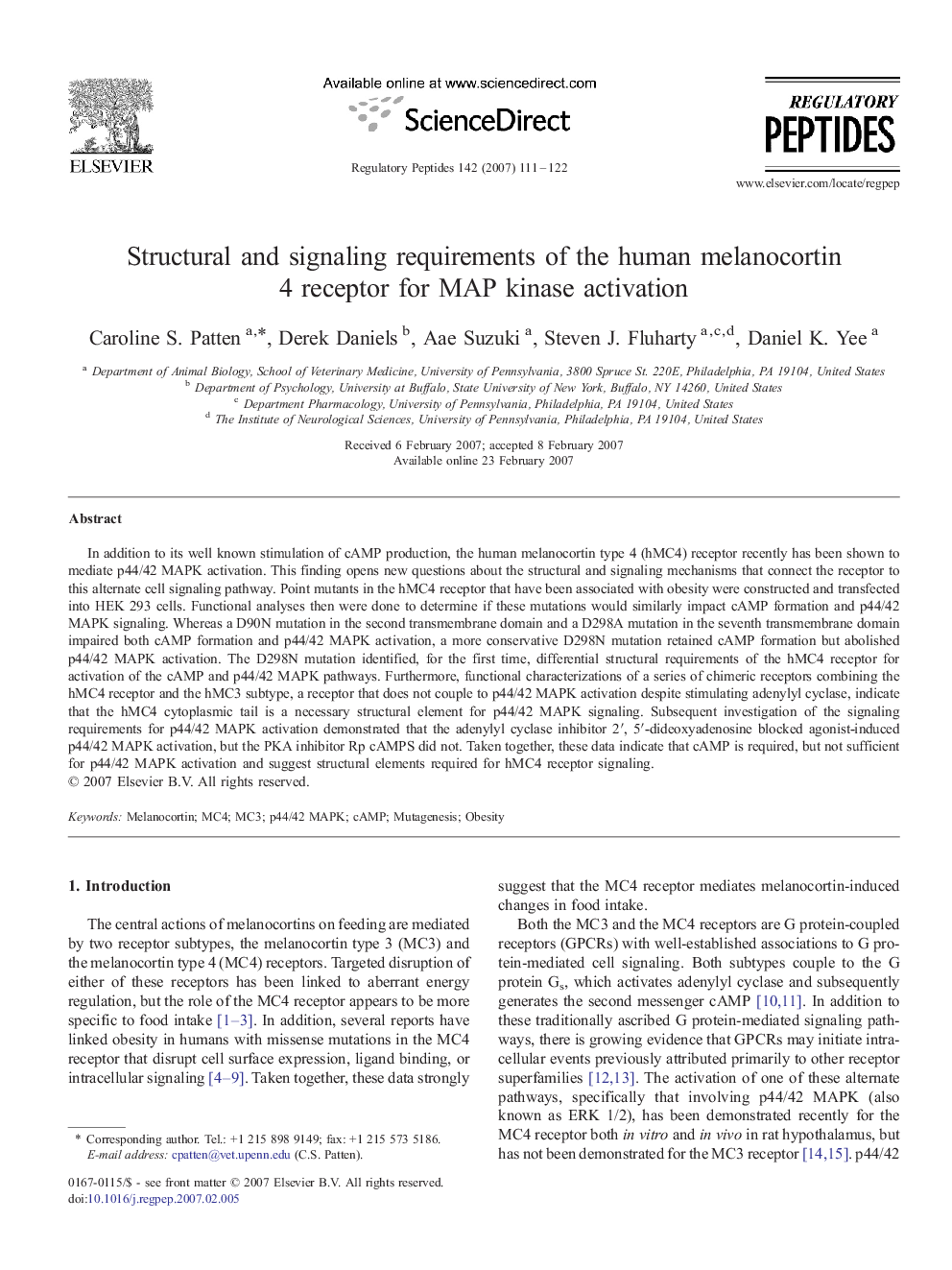| Article ID | Journal | Published Year | Pages | File Type |
|---|---|---|---|---|
| 2023149 | Regulatory Peptides | 2007 | 12 Pages |
Abstract
In addition to its well known stimulation of cAMP production, the human melanocortin type 4 (hMC4) receptor recently has been shown to mediate p44/42 MAPK activation. This finding opens new questions about the structural and signaling mechanisms that connect the receptor to this alternate cell signaling pathway. Point mutants in the hMC4 receptor that have been associated with obesity were constructed and transfected into HEK 293 cells. Functional analyses then were done to determine if these mutations would similarly impact cAMP formation and p44/42 MAPK signaling. Whereas a D90N mutation in the second transmembrane domain and a D298A mutation in the seventh transmembrane domain impaired both cAMP formation and p44/42 MAPK activation, a more conservative D298N mutation retained cAMP formation but abolished p44/42 MAPK activation. The D298N mutation identified, for the first time, differential structural requirements of the hMC4 receptor for activation of the cAMP and p44/42 MAPK pathways. Furthermore, functional characterizations of a series of chimeric receptors combining the hMC4 receptor and the hMC3 subtype, a receptor that does not couple to p44/42 MAPK activation despite stimulating adenylyl cyclase, indicate that the hMC4 cytoplasmic tail is a necessary structural element for p44/42 MAPK signaling. Subsequent investigation of the signaling requirements for p44/42 MAPK activation demonstrated that the adenylyl cyclase inhibitor 2â², 5â²-dideoxyadenosine blocked agonist-induced p44/42 MAPK activation, but the PKA inhibitor Rp cAMPS did not. Taken together, these data indicate that cAMP is required, but not sufficient for p44/42 MAPK activation and suggest structural elements required for hMC4 receptor signaling.
Related Topics
Life Sciences
Biochemistry, Genetics and Molecular Biology
Biochemistry
Authors
Caroline S. Patten, Derek Daniels, Aae Suzuki, Steven J. Fluharty, Daniel K. Yee,
